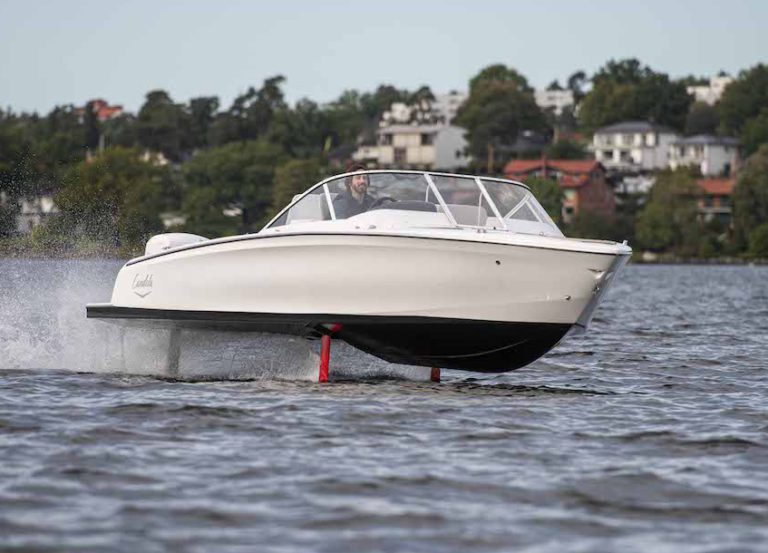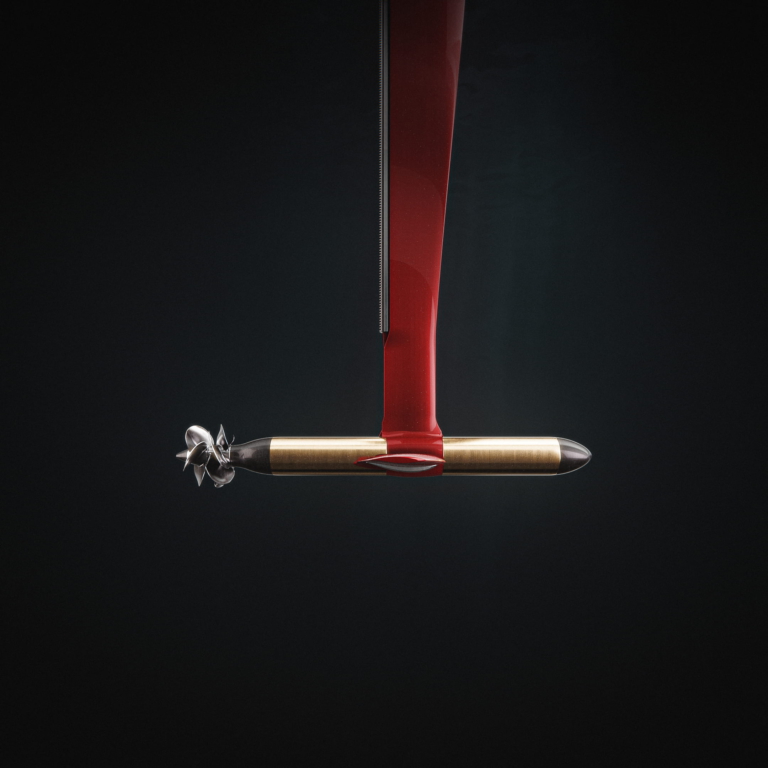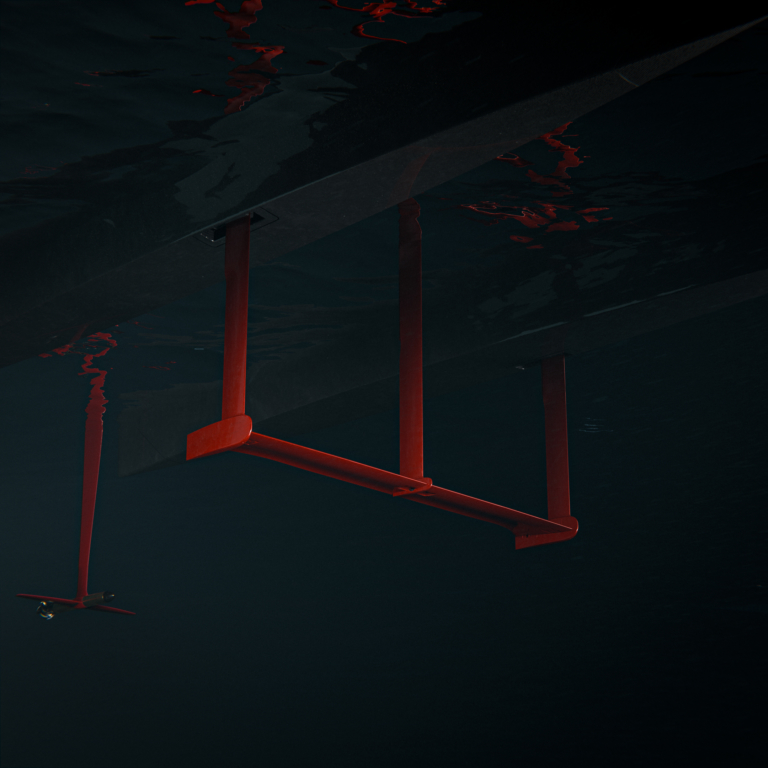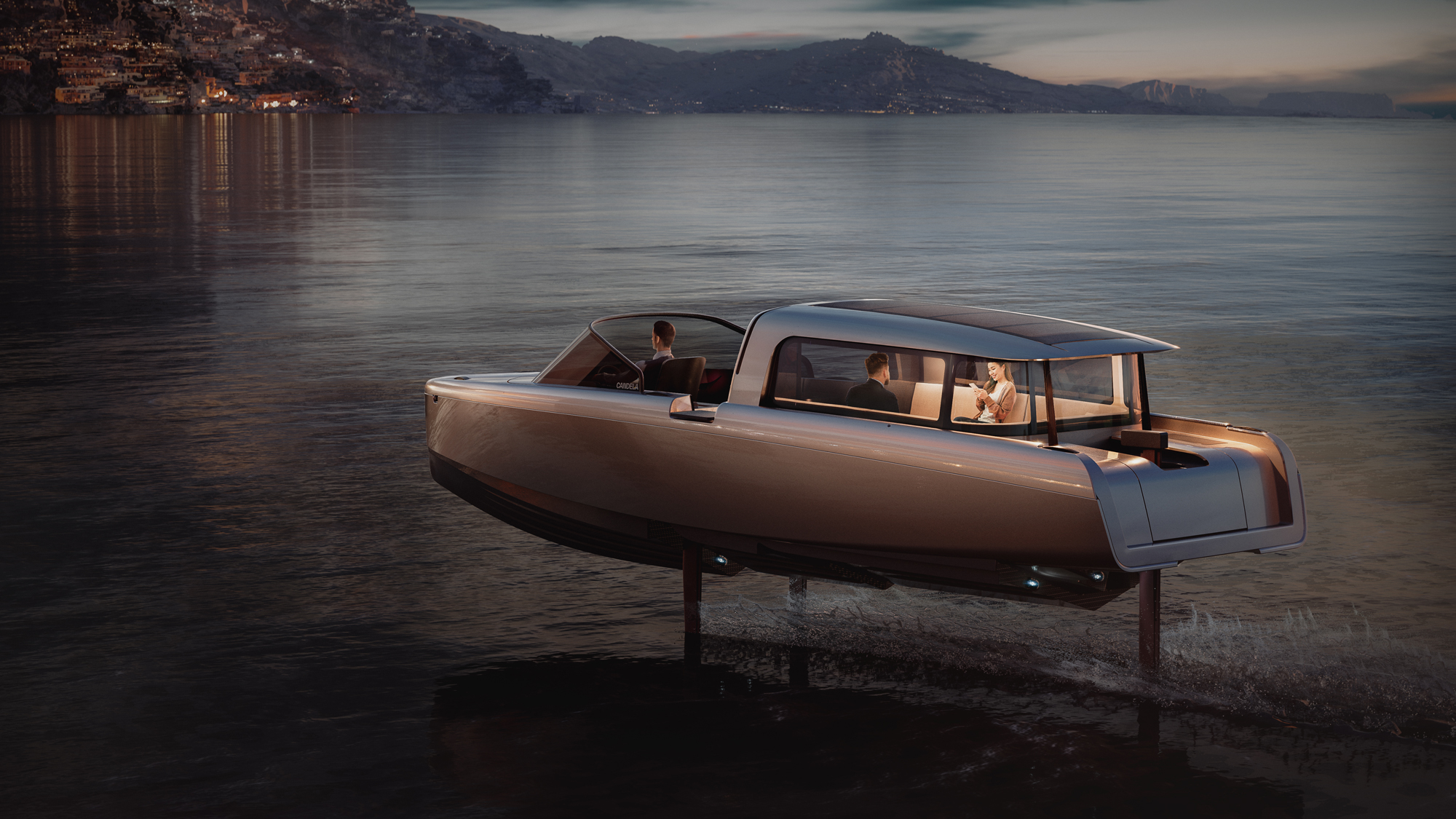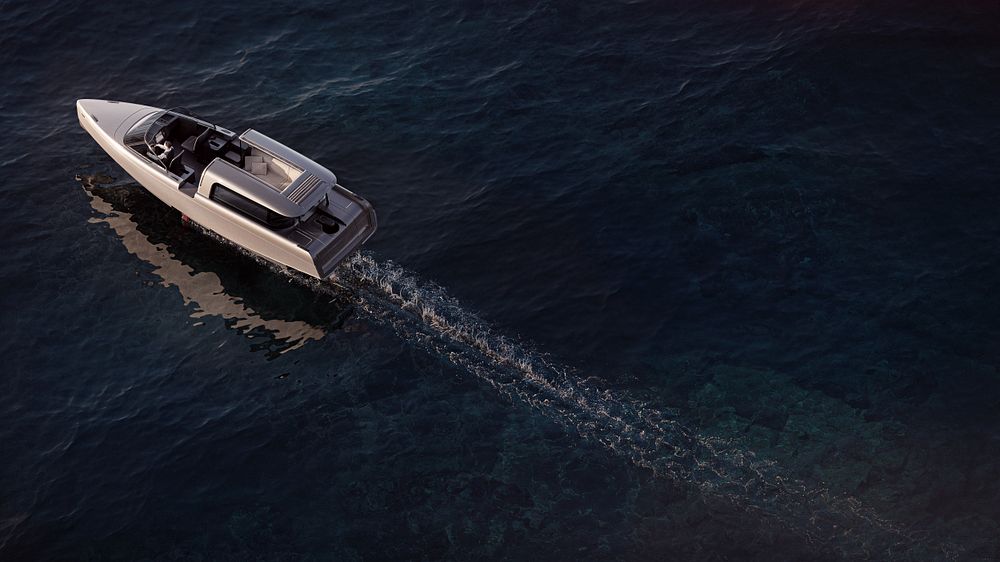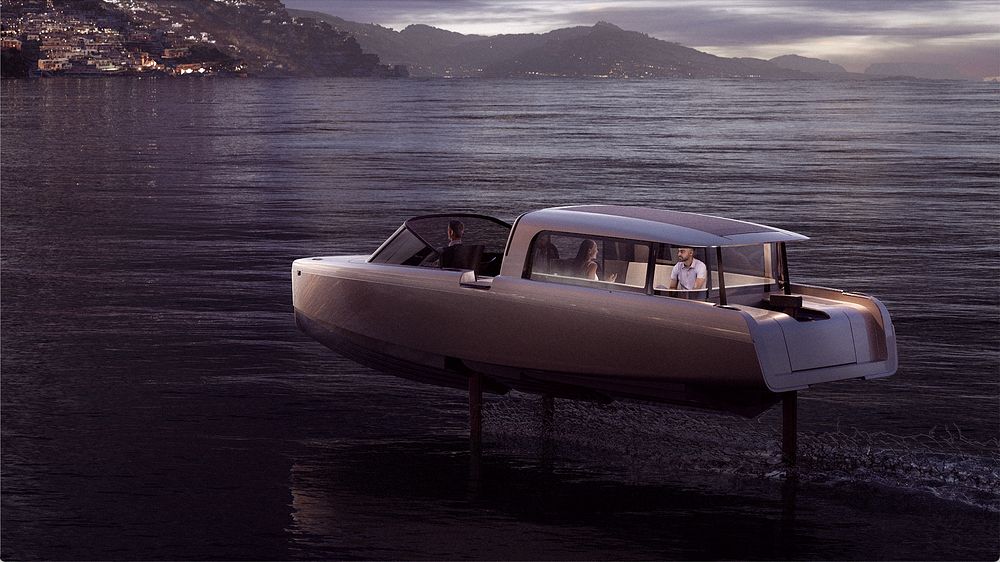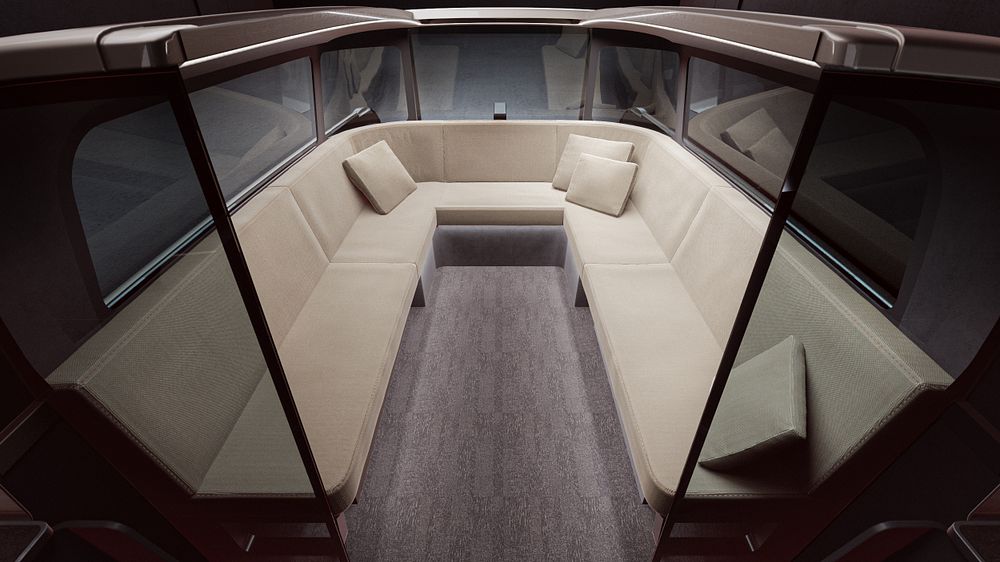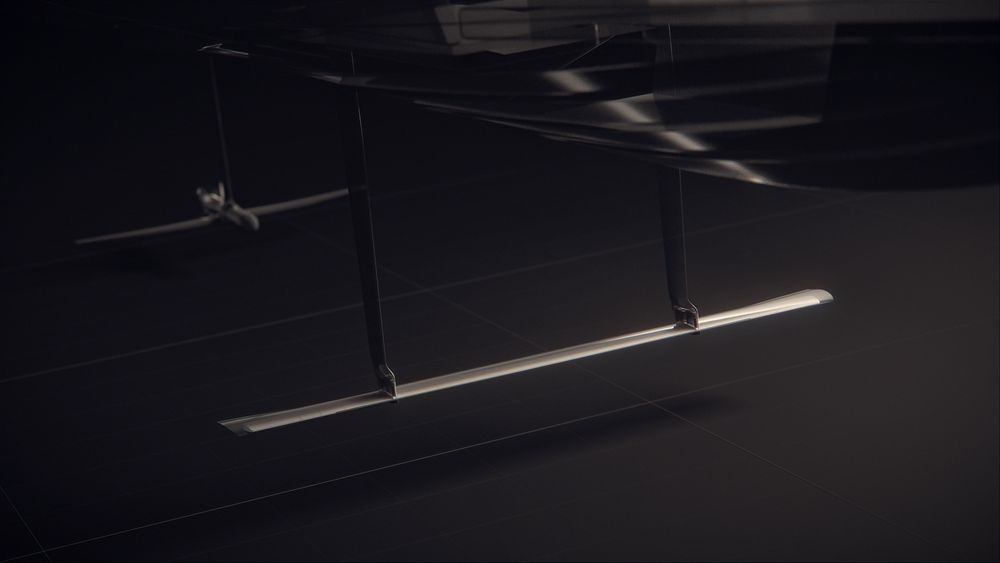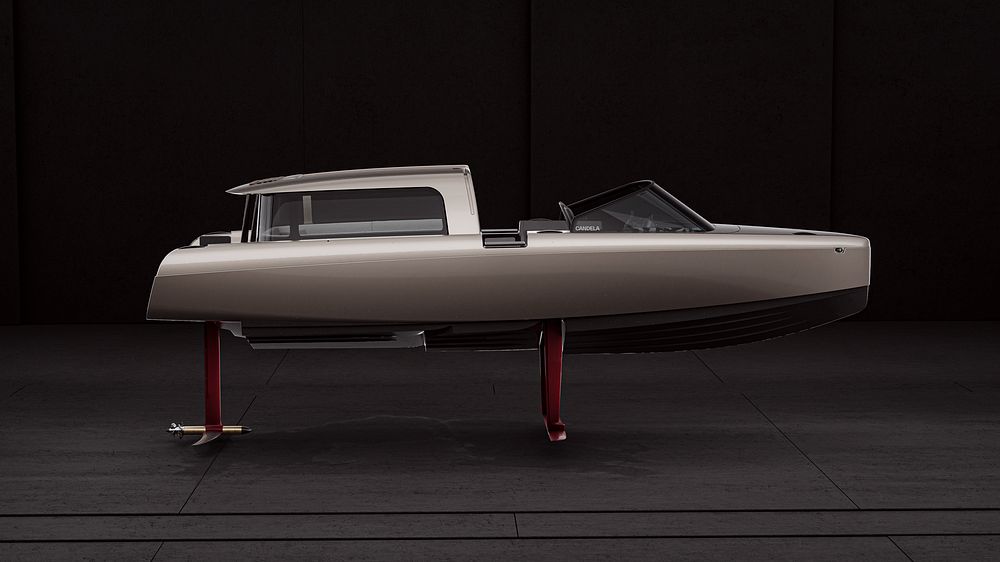The P-8 Voyager has been developed specifically to replace the world’s fleets of smaller and fast combustion engine passenger craft – yacht tenders, taxis and rigid inflatable boats.
Candela, a Stockholm-based tech company founded in 2014, is known for its revolutionary hydrofoiling electric vessels. From the Candela C-8 leisure boat (which also is debuting at Salone Nautico in Venice) to the flying electric ferries for the City of Stockholm, the Swedish marine tech company is rethinking and redefining waterborne transport.
The C-FOIL hydrofoil system on Candela P-8 Voyager has been developed by Candela’s 50+ engineers with experience from the drone, aerospace and software industries. At 16 knots, the onboard Flight controller automatically changes the foil’s angle of attack to provide the lift needed for take-off. Once foilborne, the Flight controller relies on various sensors to gauge wave height and ensure a smooth flight even in adverse conditions. Reacting in real time – adjustments to roll, pitch and height are made 100 times per second – the system can fly in 4 to 5-foot chop without slamming.
You get the seakeeping ability of a 100-foot ship in a 28-footer. Foiling in bad weather will be the ultimate experience of nature. Taking in the dramatic scenery, breaking waves and all, while safely flying over it in absolute silence. This is a new level of luxury that, I dare say, has never been experienced at sea, says Erik Eklund.

 Overview
Overview 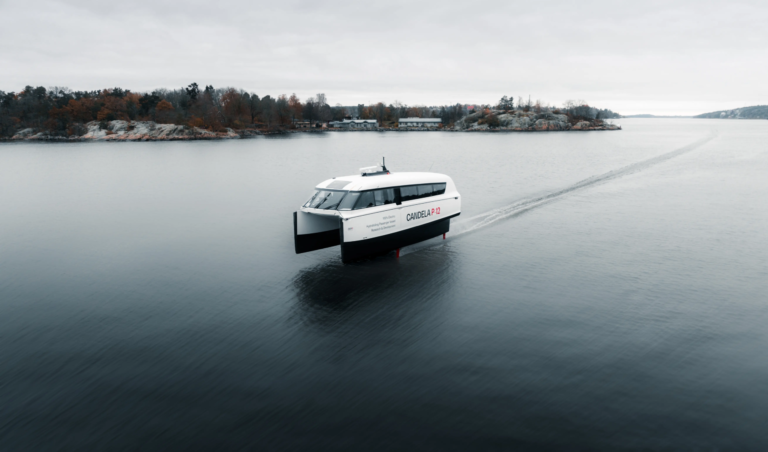 P-12
P-12 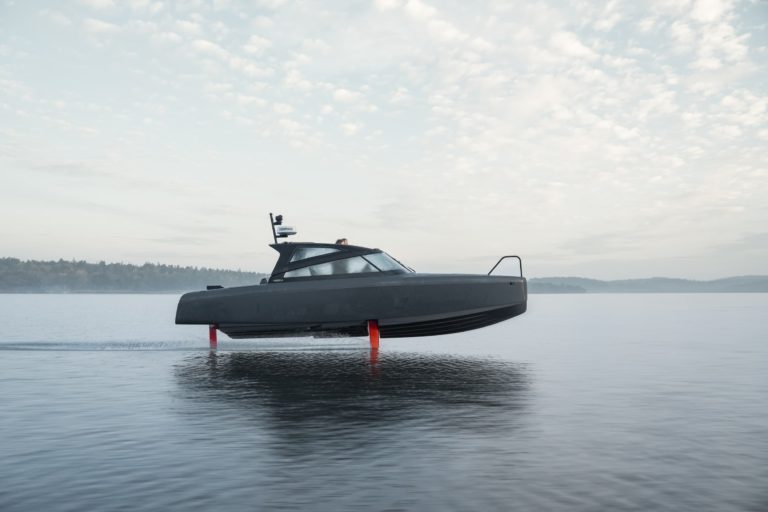
 C-8
C-8 